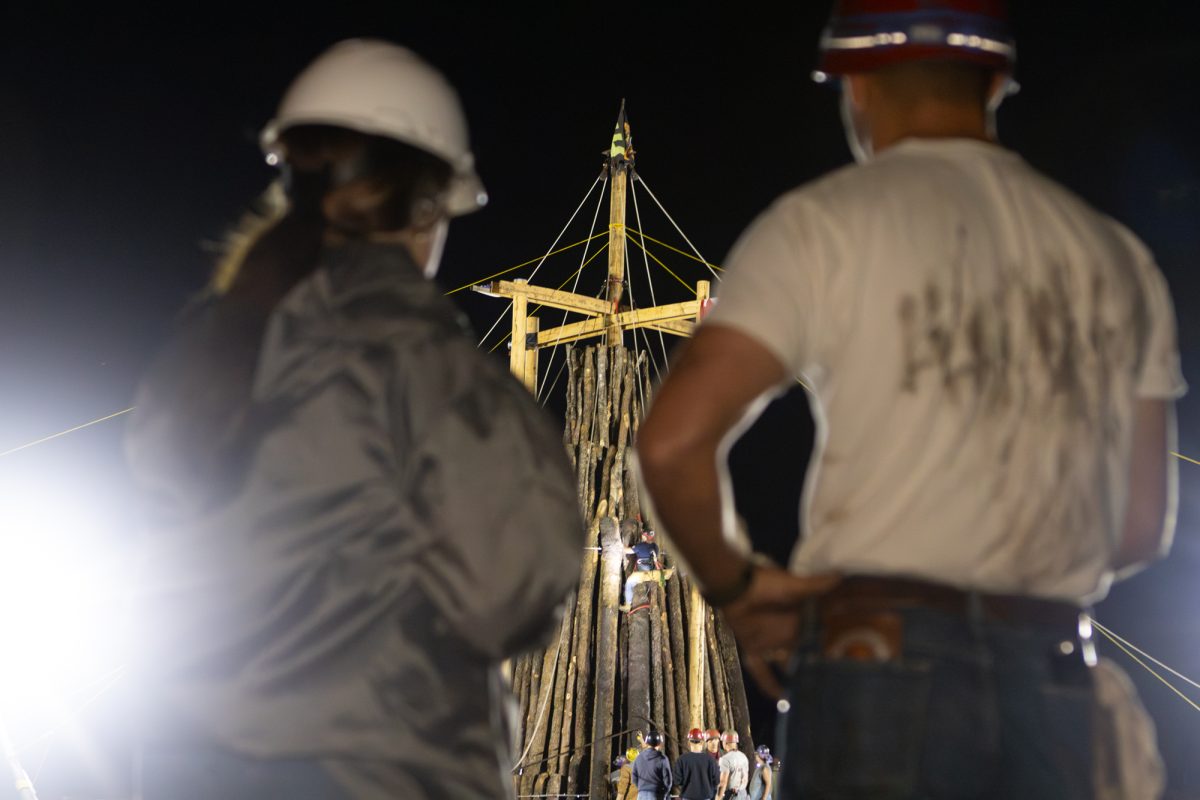Some people — the ones who are fearless when picking up a spider and confronting a giant anthill — were really into bugs growing up.
Now, they make up their own community of bug lovers at A&M.
The members of the Undergraduate Entomology Student Organization can be found prying bark off a tree with a crowbar at Lick Creek Park, sticking their hands in holes where they don’t belong and putting the day’s catch in a jar with acetone, all for the sake of their collection.
“Anything we think is a good habitat for an insect we’re looking for, we’ll look through it,” said Andrew Graf, entomology senior and group historian.
Graf’s knowledge of insects ranges from tiger beetles and their temporary blindness from moving so fast, to dragonfly flight patterns and how to catch them.
He said he conquered his fear of handling insects simply by handling a tarantula, and now he shares his dorm room with some.
“If I have my equipment on me and I know what I’m doing — I’m not bothered at all,” Graf said.
Graf said one of the coolest finds of the club was when a member kicked a rotting tree down “King Leonidas style,” causing it to fall into the creek to expose the local Hercules Beetle.
Shelby Kilpatrick, entomology and agricultural leadership sophomore and secretary of UESO, said she has always been interested in the outdoors and started learning about bugs 11 years ago as part of a 4-H project.
“My current bug collection has about 450 insects in it and those are just the ones that are pinned, curated and identified,” Kilpatrick said.
Kilpatrick said she has jars full of insects at home that need to be identified and pinned up.
The Minnie Bell Heep building on West Campus is the home to the Entomology department and serves as home base for entomology students. It houses the university insect collection where Kilpatrick used to work, which has acquired 45,000 species and almost 2.2 million specimens. The collection is the largest entomological research collection in the state of Texas.
Michel Slotman, associate professor of entomology, said he studies mosquitoes extensively. His lab primarily looks into malaria mosquitoes and the evolutionary genetics and genomics of the ones that transmit diseases.
“I started out as an evolutionary biologist, but developed an interest in entomology because of the beauty of insects and their absolutely stunning diversity,” Slotman said.
Slotman said he was about 18 when he came across a large Scarab beetle, inspiring him to start a collection, which would eventually include very large Australian stick insects, multiple whip scorpions and hissing Madagascar cockroaches.
Slotman said he has even gone as far as to use his arm to feed the mosquitoes before the days of artificial membrane feeding system and has built a sort of immunity to the bites.
“Female mosquitoes need a blood meal to develop eggs,” Slotman said. “For the species I work on, human blood is their preferred food source, it is what they like best above all else. So if you are running an experiment and need lots of eggs, putting your arm in the cage will save you lots of time. It always seems to make quite an impression on people that one would do that, but to be honest it is a very common thing to do among mosquito researchers.”
Organization unites campus bug lovers
March 8, 2015
Shelby Knowles — THE BATTALION
The Entomology Department displays collections of insects, including the Morpho didius seen to the left, in the second floor at the HEEP Building.
0
Donate to The Battalion
Your donation will support the student journalists of Texas A&M University - College Station. Your contribution will allow us to purchase equipment and cover our annual website hosting costs.









